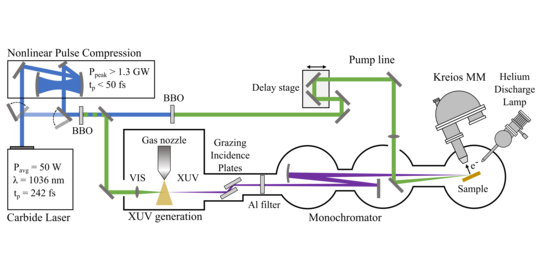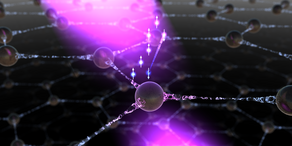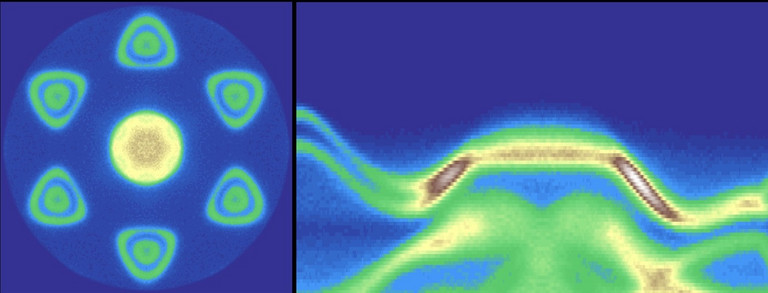Time-resolved ARPES with fs-XUV radiation (KREIOS MM)
Our laboratory hosts a state-of-the-art time-resolved angle-resolved photoemission spectroscopy (tr-ARPES) instrument designed to explore the ultrafast electronic structure of quantum materials. Using femtosecond extreme ultraviolet (XUV) pulses generated by high-harmonic generation, we can capture snapshots of electrons in motion with both high temporal and energy resolution. A distinctive strength of our setup is its tuneable performance:
- High-time-resolution mode – compressed pulses achieve temporal resolution down to ~50 fs, ideal for tracking the fastest processes in solids.
- High-energy-resolution mode – uncompressed pulses provide spectral resolution better than 110 meV, allowing precise mapping of subtle band structure features.
The XUV beamline is coupled to a momentum microscope (KREIOS MM, SPECS GmbH), enabling full Brillouin zone mapping in a single shot without scanning emission angles. Its high angular acceptance and micron-scale spatial resolution make it possible to study exfoliated van der Waals flakes and other small samples.
Recent Highlights
- Ultrafast valley dynamics in WS₂
- In Scientific Reports (15, 3611, 2025), we demonstrated the capabilities of our tr-ARPES system on bulk WS₂. We resolved hot-electron relaxation between the K and Σ valleys of the conduction band, finding slower decay in the Σ valley (~1.3 ps) compared to the K valley (~0.69 ps), and measured intervalley scattering times of ~94 fs.
- Correlation-driven excitations in FePS₃
- In Newton (1, 2, 2025), we traced the sub-100 fs buildup and picosecond decay of d–d orbital excitations in the layered antiferromagnet FePS₃. The results disentangle spin-allowed and spin-forbidden pathways and reveal the interplay between local electronic correlations and ultrafast lattice dynamics.
This versatile platform enables studies of carrier, spin, and excitations dynamics in quantum materials — from valley physics in semiconductors to correlation effects in magnets — paving the way for a deeper understanding of functional quantum materials.






